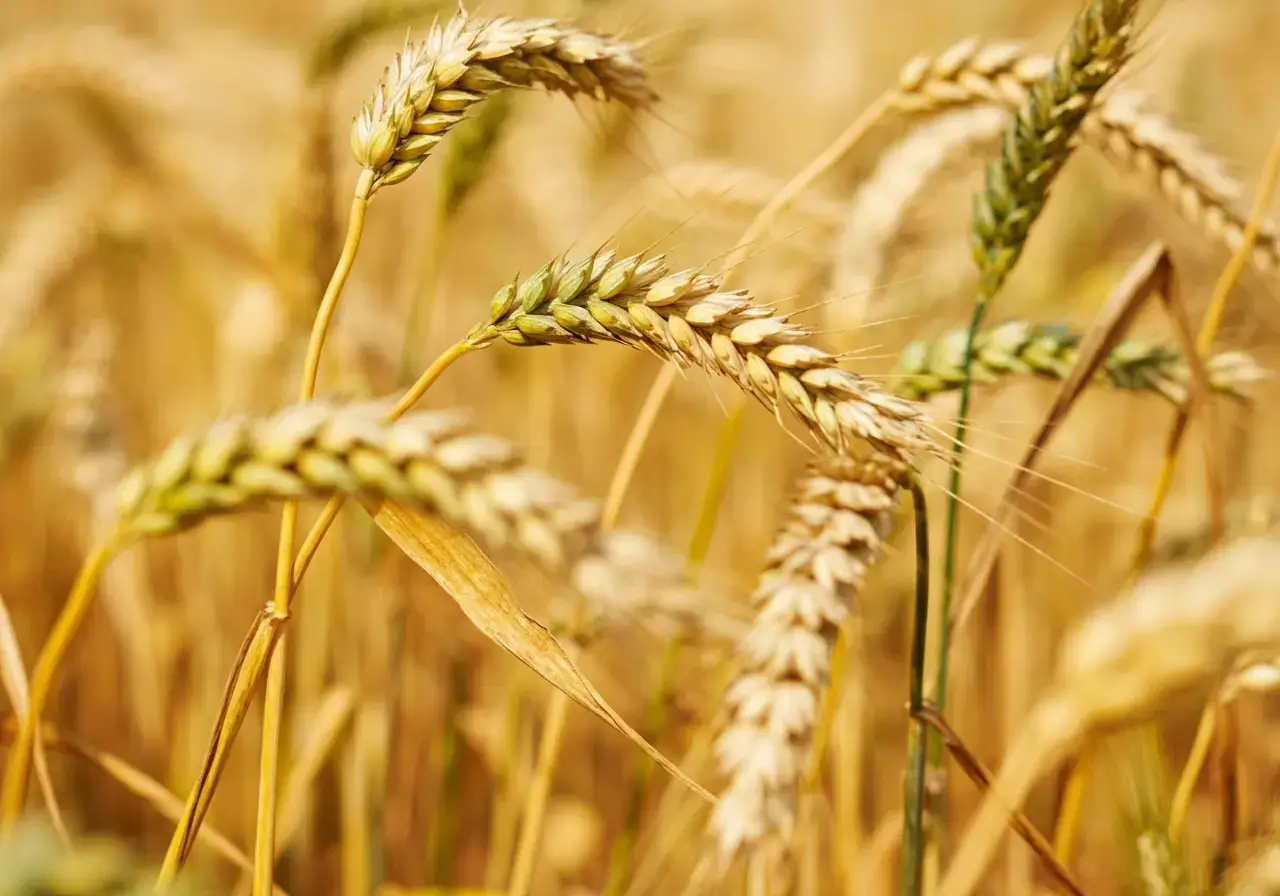Commodities TRADING GUIDE
Discover the Benefits of Commodity Trading for Your Financial Future
Learn more about commodity trading, including the functioning of the market, factors influencing prices, various instruments, and trading strategies. Continue reading to gain insight on how to trade commodities using Contracts for Difference (CFDs).

What is commodities trading?
The commodities market is a marketplace where raw or primary products are bought and sold. These commodities can include metals, energy, agricultural products, and other goods. The market is divided into two main categories: the physical market and the derivatives market.
The physical market is where actual commodities are bought and sold. For example, a farmer may sell a certain quantity of wheat to a miller, or an oil company may sell crude oil to a refiner. In these transactions, the buyer takes possession of the physical commodity.
The derivatives market, on the other hand, is where contracts for future delivery of a commodity are bought and sold. These contracts are based on the price of the underlying commodity and are used as a way to hedge against price volatility or speculate on future price movements. The most common types of derivatives contracts are futures and options contracts.
Futures contracts are agreements to buy or sell a specific commodity at a specific price on a specific date in the future. They are traded on commodity exchanges, such as the Chicago Mercantile Exchange (CME) and the Intercontinental Exchange (ICE).
Options contracts give the holder the right, but not the obligation, to buy or sell a specific commodity at a specific price on or before a specific date in the future. They are also traded on commodity exchanges.
Additionally, the commodities market can also be separated into soft and hard commodities. Soft commodities include agricultural products, such as wheat, corn, and coffee, while hard commodities include metals, such as gold, silver, and copper and energy products like oil, natural gas and coal.
Contracts for Difference (CFDs) and futures contracts are both derivatives that allow traders to gain exposure to the underlying asset without having to take physical delivery. However, there are some key differences between the two that may make CFDs more suitable for some traders.
Here are a few reasons why CFD trading may be considered better than futures trading:
- Leverage: CFDs allow traders to trade with leverage, which means that they can control a larger position with a smaller amount of capital. This can be beneficial for traders who want to make a large profit from a small price movement, but it also increases the risk of losing more than the initial deposit.
- Short selling: CFDs allow traders to take short positions, which means that they can profit from a falling market. Futures contracts, on the other hand, typically require the trader to take a long position, which means that they can only profit from a rising market.
- Lower costs: CFDs often have lower costs than futures contracts. For example, CFDs typically do not have an expiration date, which means that traders do not have to roll over their position. Additionally, CFDs do not require traders to pay any exchange or clearing fees.
- Greater flexibility: CFDs offer greater flexibility in terms of the range of markets and assets that can be traded. Futures contracts are typically available for a limited number of markets, such as commodities, whereas CFDs can be used to trade a wide variety of markets including equities, commodities, indices, forex, etc.
- Accessibility: CFDs are generally considered more accessible to retail traders because they can be traded through online brokers with relatively low minimum deposits and with leverage. This is in contrast to futures contracts, which are typically traded on regulated exchanges and require significant capital, and a higher level of knowledge to trade.
What Moves Commodities prices?
Commodities prices can be influenced by a variety of factors, including:
- Supply and demand: The basic economic principle of supply and demand plays a significant role in determining the price of a commodity. If demand for a commodity is high, but the supply is low, the price will increase. Conversely, if demand is low and supply is high, the price will decrease.
- Weather conditions: Weather conditions can have a significant impact on the prices of agricultural commodities, such as wheat and corn. Droughts, floods, and other extreme weather conditions can affect crop yields and thus the supply of a commodity, which in turn can affect the price.
- Economic conditions: The state of the overall economy can also affect commodity prices. A strong economy tends to lead to higher demand for raw materials, which can push prices higher. Conversely, a weak economy can lead to lower demand and lower prices.
- Political and social instability:Political and social instability in countries that produce or consume a particular commodity can affect its price. For example, if a major oil-producing country experiences a revolution, it could disrupt the supply of oil, pushing prices higher.
- Currency fluctuations:Currency fluctuations can also play a role in determining commodity prices. Commodities are often priced in US dollars, and a weaker US dollar can make commodities more expensive for buyers using other currencies, which can lead to higher prices.
- Hedge fund and speculators: The speculation of large investors, such as hedge funds and institutional investors, can also influence the prices of commodities. When these investors buy or sell large amounts of a particular commodity, it can affect the supply and demand and therefore the price.

How to trade commodities CFDs
Trading commodities using Contracts for Difference (CFDs) is a popular way for traders to gain exposure to the commodities market without having to take physical delivery of the underlying asset. Here are some steps to trade commodities CFDs:
- Open a 4T trading account: Click here to start your trading journey by opening a trading account. This will typically involve providing some personal and financial information, as well as completing any necessary compliance checks.
- Fund your account: To trade commodities CFDs, you will need to fund your account with an initial deposit. This deposit, also known as margin, is used to cover any potential losses on your trades. Minimum deposit is $100.
- Choose a commodity: Once your account is set up, you can choose a commodity that you want to trade. Some of the most popular commodities that can be traded as CFDs include oil, gold, and natural gas.
- Place a trade: You can place a trade by choosing the commodity, the amount you want to trade, and the direction you think the price will move (buy or sell).
- Monitor your trade: Once you have placed a trade, you will need to monitor it to see how it is progressing. You can use charts, indicators, and other tools to help you make decisions about when to close the trade
It is important to note that trading commodities CFDs can be risky, as prices can be volatile and you may lose more than your initial deposit. Therefore, it is recommended to be well informed and to have a proper trading strategy in place before trading.
Commodities trading strategies
A commodities trading strategy is a plan that outlines how a trader will buy and sell commodities in order to make a profit. There are many different types of trading strategies that can be used in the commodities market, each with its own advantages and disadvantages. Some common strategies include
- Trend following: This strategy involves buying commodities that are in an uptrend and selling those that are in a downtrend. This strategy is based on the idea that prices tend to continue moving in the direction of the trend.
- Contrarian: This strategy involves taking positions that are counter to the current market trend. This strategy is based on the idea that markets tend to overreact to news and events and that prices will eventually return to their fair value.
- Spread trading: This strategy involves buying and selling two different, but related, commodities in order to profit from the difference in their prices. For example, a trader might buy crude oil and sell gasoline, which is refined from crude oil.
- Hedging: This strategy involves taking a position in a commodity in order to offset the risk of an existing position in another commodity or financial instrument. For example, a farmer who grows wheat might sell wheat futures in order to hedge against the risk of a decline in the price of wheat.
- Arbitrage: This strategy involves buying and selling the same commodity simultaneously in different markets in order to profit from price differences. For example, a trader might buy crude oil in New York and sell it in London, taking advantage of any difference in the two prices.
It's important to note that no strategy guarantees success, and different strategies may be more or less suitable depending on the trader's objectives and risk tolerance. It's also important to have a good understanding of the market, commodity, and the factors that influence the commodity's price before implementing any strategy.

What are the commodities trading hours and when is the best time to trade
Commodities trading hours can vary depending on the specific commodity and the exchange on which it is traded. Here are the typical trading hours for some popular commodities:
- Crude oil: The New York Mercantile Exchange (NYMEX) and the Intercontinental Exchange (ICE) both trade crude oil futures during regular market hours, which are from 9:00 a.m. to 2:30 p.m. EST.
- Gold: The COMEX division of the New York Mercantile Exchange (NYMEX) trades gold futures during regular market hours which are from 6:00 p.m. to 5:15 p.m. EST, with an hour break between 5:15 p.m. and 6:00 p.m.
- Natural gas: The New York Mercantile Exchange (NYMEX) trades natural gas futures during regular market hours which are from 9:00 a.m. to 2:30 p.m. EST.
- Agricultural commodities: Agricultural commodities such as wheat, corn, soybeans, and others are traded during regular market hours which are from 9:30 a.m. to 1:15 p.m. EST on the Chicago Board of Trade (CBOT) and the Minneapolis Grain Exchange (MGEX).
It is important to note that the 4T trading platform allows traders to trade commodities outside of the regular market hours
As for the best time to trade, it can vary depending on the trader's objectives, risk tolerance, and the specific commodity. Some traders prefer to trade during periods of high volatility, while others prefer to trade during periods of low volatility. Day traders may prefer to trade during the most active times of the trading day, while swing traders and position traders may prefer to trade during quieter times of the day. However, it's important to note that the best time to trade also depends on the specific commodity, as some commodities may exhibit different price patterns or behaviours at different times of the day or week.
- Basics of Trading
- Equity Trading
- Commodities Trading
- Forex Trading
- Indices Trading
- Responsible Trading
- Deposits and Withdrawals
- Spreads and Swaps
- Leverage and Margin
The Building Blocks for Succeeding with Forex Trading

Check out our FAQ section for commonly asked questions.
